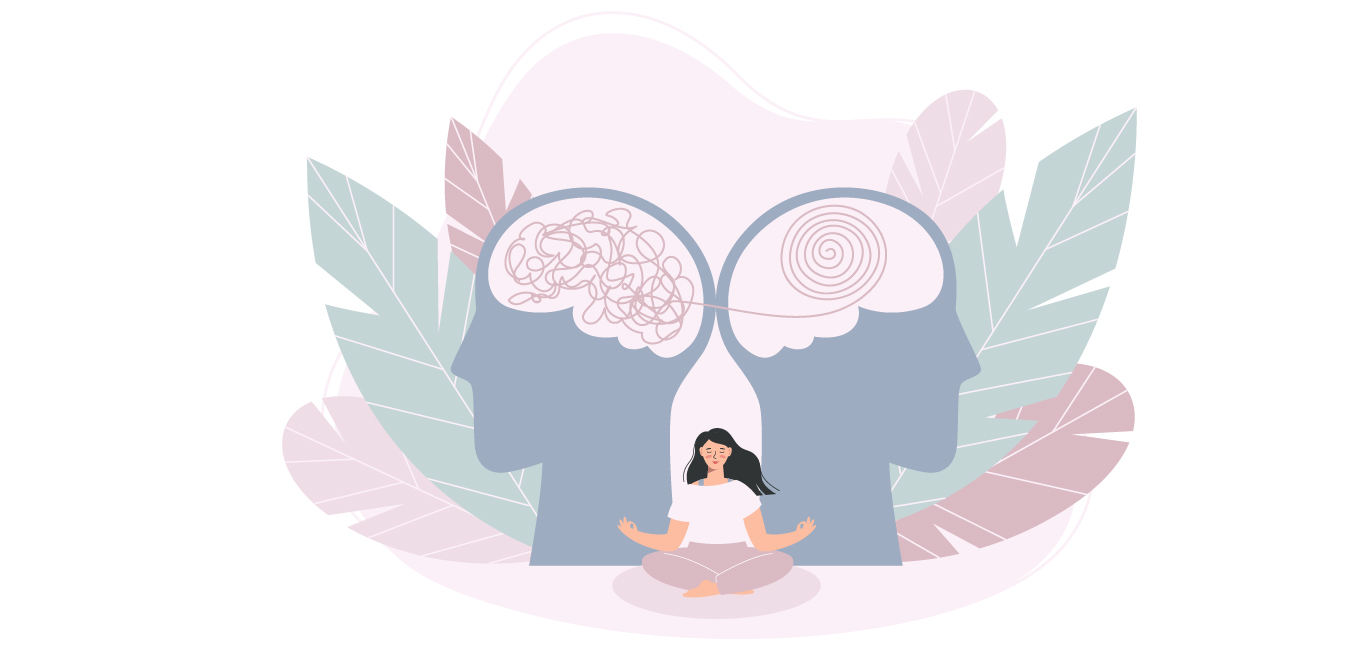
“Smriti mediation helped me find myself,” says Rajalakshmi, a 32-year-old government employee from Bengaluru. A year ago, when she began experiencing mental burnout and stress, one of her friends guided her to a hospital in Kerala where smriti meditation is practised. Being a meditation enthusiast, she was able to easily grasp the technique.
Rajalakshmi finds smriti meditation offers solutions for her disturbed mood and calls it her life’s refresh button.
Neetha Shetty, 34, a Bengaluru-based software engineer, has also benefited from smriti meditation. While undergoing a routine health check-up, Shetty found that she had Poly Cystic Ovarian Disease (PCOD), a psychosomatic health condition. She started experiencing symptoms after she learned about her condition.
Read more about managing PCOS with Ayurveda here.
Shetty’s passion for her work also declined with time as she started feeling demotivated and distracted. She thought of quitting her job and going in for a second child just to feel better. Distracted by hundreds of thoughts, she was not able to decide on anything. During this phase, she was introduced to smriti meditation by her doctor.
She was a person who did not believe in counselling and therapy as she was not open about sharing her issues with anyone. However, after only her first session, she realised that she was able to openly discuss her emotions with her doctor while meditating. During her second session, her doctor asked her to take a stand on her decision, and she surprised herself by making a clear decision.
Shetty quit her job and took a break from work for a few months. During the eight-month break, her menstrual cycles were back on track and she was able to conceive for the second time. After the break, she came back to work with more enthusiasm and passion.
Shetty is now living a happy life and can think and process her thoughts clearly. She says that she has found her original self with just two interactive sessions of smriti meditation.
What is smriti meditation
Smriti in sanskrit means memory and meditation is a practice where a person uses mindfulness (focusing on a particular object or thought) to attain mental awareness and emotional stability. When combined, these two can be beneficial in memorising significant events, persons and places that contribute to understanding what makes a person feel low or sad.
Dr Muhammed Safeer P I, an ayurvedic practitioner from Smriti Meditation Research Institute for Therapeutic Innovations (SMRITI) from Kerala’s Kottakkal talked to Happiest Health and explained the technique.
“A physician guides a person to achieve a deep meditative state and continuously interacts with them to make them understand their issues and find solutions by themselves,” says Dr Safeer.
Dr K V Dilipkumar, chairman of SMRITI and former professor at Vaidyaratnam PS Varier Ayurveda College, Kottakkal, is the person who coined the term smriti meditation and gave this technique a shape.
How is it different from regular meditation
Several meditative techniques are easy to learn and practice, but smriti meditation needs expert guidance. Unlike other meditational forms, this meditation involves interaction with a specialised doctor. It is designed based on ayurvedic principles of psychotherapy and concepts of yoga.
Yogic meditation focuses more on the relaxation of the mind and the spiritual evolution of a person while smriti meditation focuses on finding the causes of illness (diagnosis) and management of psychological and psychosomatic health conditions.
What happens in smriti meditation
It is performed in different stages, says Dr Safeer. At first, the doctor talks to the person and understands the intensity of his condition (physical, psychological or psychosomatic) and then plans for multiple sessions of meditation.
The first stage is named jnana. This includes various components such as:
- Collecting basic information of a person (vidya)
- Understanding the person’s skills, strengths, and weaknesses (siddhi)
- Analysing their ability to remember and organise thoughts and incidents from childhood to present day (mathi)
- Understanding the person’s beliefs about their condition (medha)
- Making the person understand what has gone wrong and what has caused the clutter in their mind (prajna)
The second stage is named vijnana. During this phase, the physician asks the person to set a personal goal. Considering the problems and unpleasant incidents (of the past), the person sets a goal and works on achieving it.
The third stage is dhairya. Here, the doctor asks the person to restrain from external disturbances by going into a deep meditative state. Ayurvedic and yogic practitioners believe that health conditions are not only manifested due to physical factors but also emotional elements such as stress and anxiety.
The next stage is smriti. This deals with recollecting the events or people and places that have contributed to the current state of mind and then resolving those issues.
During a conversation, individuals may not open up about their personal lives and memories that are linked to their health conditions. But by taking a person into a deep meditative state, it is possible to go deeper into every aspect of their life, says Dr Safeer.
These stages are performed in three to five sessions or even more. Each session might last for up to two hours on average.
Who can go for it
“It is good for those who want to develop their personality and prevent the onset of different health conditions,” says Dr Shahnaz Fathima, a senior yoga consultant from Nirva Health, London.
Therapeutically, it is beneficial for any kind of chronic health condition (physical, psychological and psychosomatic) such as arthritis, PCOS, irritable bowel syndrome, stress, hallucinations, delusions, anxiety, depression, panic attacks and bipolar disorder.
“A lot of college students who experience academic stress, anxiety and those who want to work on their personality development are advised smriti meditation,” adds Dr Fathima.
Are there any contra indications?
A person’s consent is the basic and most important part of this practice. As this is an interactive procedure, it requires a person’s willingness to get completely involved in the process. However, smriti meditation is not advisable for those with psychotic conditions, adds Dr Safeer.
Note: Since this is a guided meditation therapy, one cannot practice it by themselves. It needs to be strictly done in the presence of an expert.















